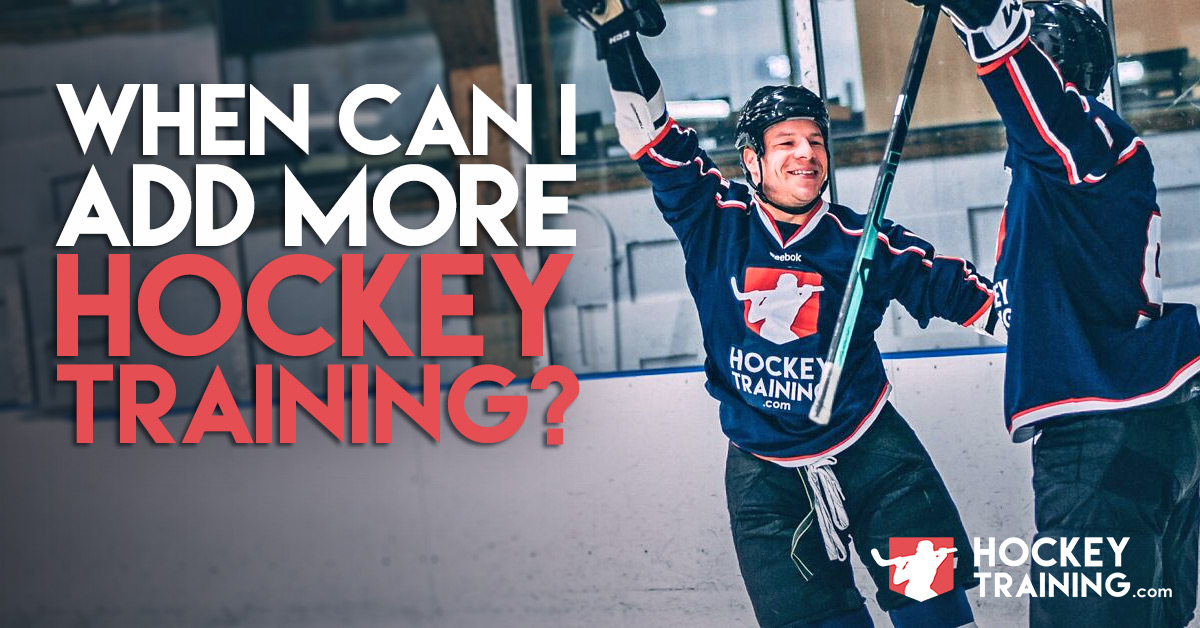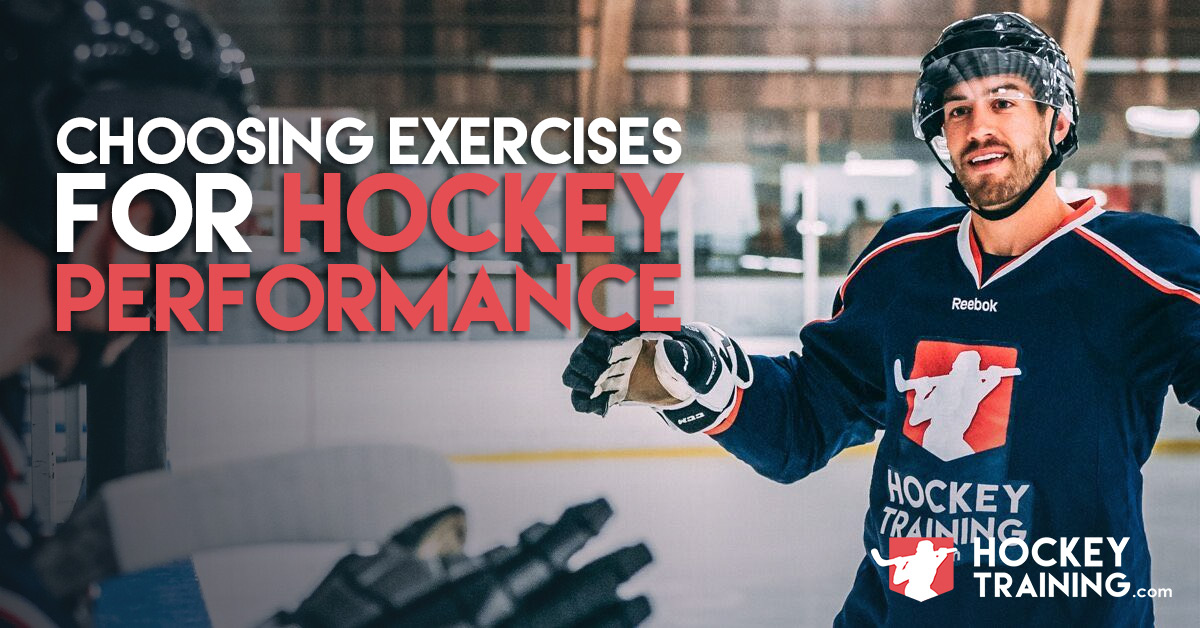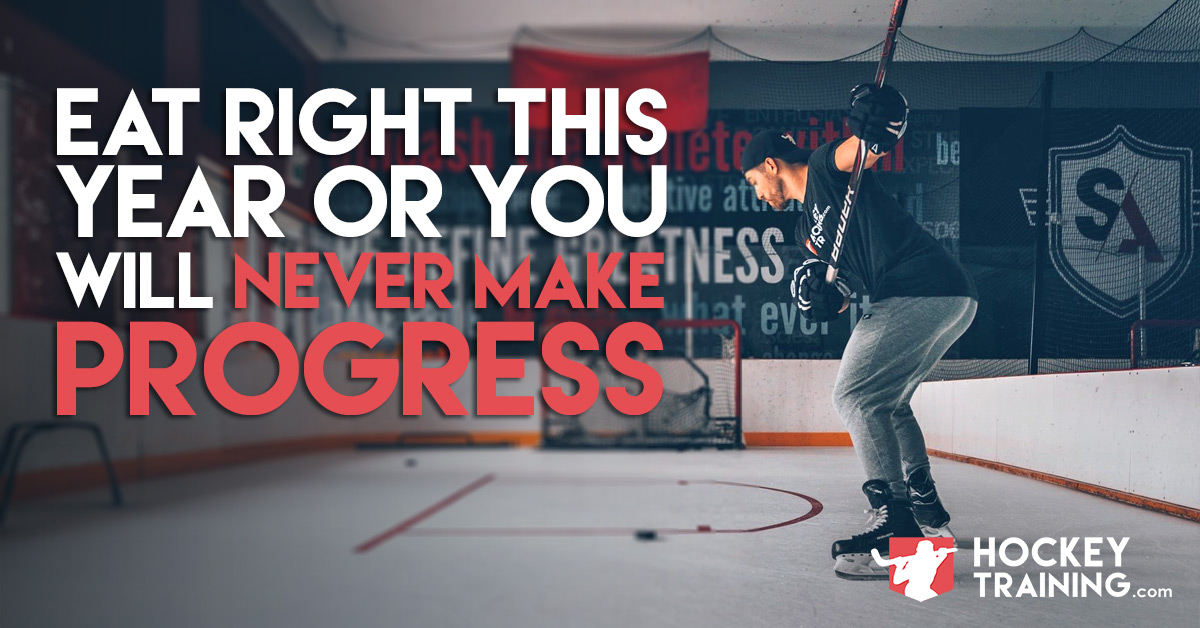“Hey Dan, can I add XYZ to my existing program?”
“Coach Garner! When is the best time to add in this finisher I saw?”
“Hey coach, I’m already on a hockey training program of yours but am looking to do more, what can I do?”
The examples could go on and on, I get these types of questions every single week from hockey players who are already on comprehensive programs and are already getting the expected results – but for some reason or another just won’t allow themselves to “ride the wave” of the great program that they’re currently on because they fear they are “missing out” if they don’t do more.
Nonsense.
There is a big difference between adding training volume just for the sake of adding more volume and adding quality volume that has structure and purpose towards reaching your goals.
Junk Volume
There’s a term widely used in the running world called “junk miles”
It refers to the idea that once you have run past a certain point that day, you’re not going to get any more fit by continuing to run – and in fact, the opposite usually happens.
You run yourself down, create a massive fatigue debt, and will most likely leave with a couple of annoying nagging injuries.
Your good miles are behind you, now you’re just running junk miles that will do nothing for you except burn you out and make you worse.
This term was coined in the running world, but I want to borrow it and apply it here in the hockey training world.
Adding junk volume is the most common approach I see with hockey athletes, who for a lack of a better phrase are the “try-hards” on the team.
They are already doing everything they can to increase their performance but continue to question their approach and constantly get approval from the coach about what they’re doing and if it’s “optimal” or not.
I have been guilty of this myself in my training years, especially in my early years in the gym. I added volume just to “do more” because I was young and eager.
Mindlessly throwing in extra sets, reps, and conditioning work without taking the context of the entire program “as a whole” into consideration will not give you any further benefit.
The programs here at HockeyTraining.com are very methodically designed with goals of creating the best hockey specific training programs on the planet.
So, when someone wants to “do more” for the sake of doing more, they are in many cases working against the very thing they are trying to achieve – becoming a better hockey player.
Junk volume taps into your recovery and doing this lowers your motivation for training.
In fact, a lack of motivation for training can be one of the most valuable biofeedback tools you have in respect to measuring your recovery status.
You Aren’t What You Can Do, You Only Are What You Can Recover From
We see this constantly with kids who have those overbearing parents forcing them to do everything in the world to become a better hockey player.
They burn themselves out from all of the junk volume their so-called “coaches” prescribe for them on a daily basis.
After a while, they end up with a total apathy towards any kind of dryland training, and their internal biochemical systems are too fried to go back to any real training anyway.
It’s not a pretty picture, and their ability to tolerate real training has to be built back up very slowly and gently (as does their relationship with the coaches who put them in this position in the first place).
Sometimes, their love for hockey never comes back, depending on what they’ve been through.
Adding junk volume can also lead to tendonitis and sore joints, and all the other things you get with chronic overuse syndromes.
You may get weaker, and your sleep can suffer as well – which creates a very unpleasant biological feedback loop for your recovery systems.
Learning How to Do It Right
Logical and progressive overload is the goal.
More sets of more exercises is fine, but these things have to be within reason and within the considerations of the program as a whole and the hockey players training experience.
If there is only one thing I want you to take away from today’s article it’s that quality trumps quantity ten times out of ten.
That statement may seem odd when you’re talking about something called “volume”
“Shouldn’t training volume be all about quantity? I just want to work hard and get better coach!”
The answer is simple.
It’s about quality first.
Quantity will come, but it comes second.
“How Do I Know If I’m Ready for More Volume?”
This is actually a really great question, one which you should all be asking yourselves first before just adding drop sets in at random places for no reason.
The short answer is, “it depends”
The first question I have to ask you is: Have you been consistent in your training up to now?
If you start on a new hockey training program and it’s the first program you have ever been on with a simple Monday/Wednesday/Friday split, then the first thing you need to do before adding more volume is to be consistent with that very simple schedule.
Typically for 6-8 months.
What happens here is the hockey player adds a few sets here and there to their training, until they reach a point where the training sessions themselves are too long, so they move to a four-day or five-day split.
The most common next step is for the trainee to divide the body up in some way, and train more often.
This can be an upper/lower split, a push/pull split, a total body everyday split, a muscle group split, or some combination thereof.
At this point, the hockey player should stay consistent with the new four-day per week or five-day per week method of training for several months…before adding another few more sets/reps to their training.
Once you have divided the body and training days in such a manner, and have stayed consistent with it no matter what, then really – at that point – a hockey player can be ready for a 6-Days per week protocol (or just add more volume), provided a few considerations are met:
1. The program must be properly designed. You should not be going to the gym six days per week training aimlessly with workout videos from YouTube – this would be junk volume.
2. The program should be applied appropriately and not ruined by overdoing it through adding silly intensity tactics such as forced reps, negatives, and drop sets.
3. The hockey player is an advanced trainee and has very sound technique in the gym.
4. The hockey player has been measuring their progress through various body composition and performance metrics so they know when to add volume, and when not to add volume and just “ride the wave” of the success of their current program.
5. The hockey player has very few lifestyle stressors and is handling them well (recovery means both body and mind).
6. The hockey player gets good sleep each night, and prioritizes it and doesn’t say silly things like “sleep is for the weak”
7. The hockey player understands the program as a whole, and doesn’t add-in anything without considering the context of all the above.
Final Thoughts
Before adding volume into your program, you should always have an extremely sound reasoning for it and it should be based off of objectives measures.
If you’re getting results on your current program, why do you want to change it?
If you’re not getting results on your current program, what small tweak can you make to it (that you can still recover from) in order to fill that need, and how are you going to measure that new technique’s progression?
Be careful and be methodical.
The programs here at HockeyTraining.com have all of this already built into them, so I always can fearlessly recommend hopping on one of them today to get on a real program that considers the big picture as a “whole”, and not into segmented pieces of what people carelessly call “hockey specific training”
Some of you will get this, some of you will not.
But if you use the techniques above, I can guarantee you that you won’t perform any junk volume again.
And if you’re interested in having the widest selection of “done for you” hockey training programs that take all of the science already into consideration for you, check out the VIP program we have here at HockeyTraining.com









